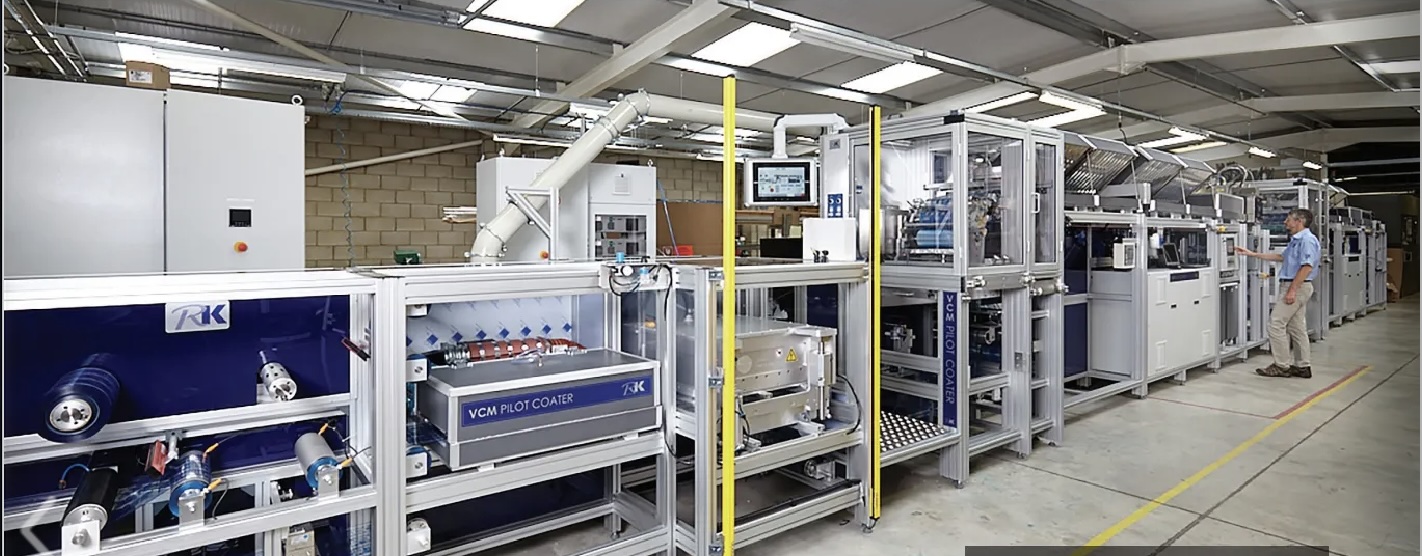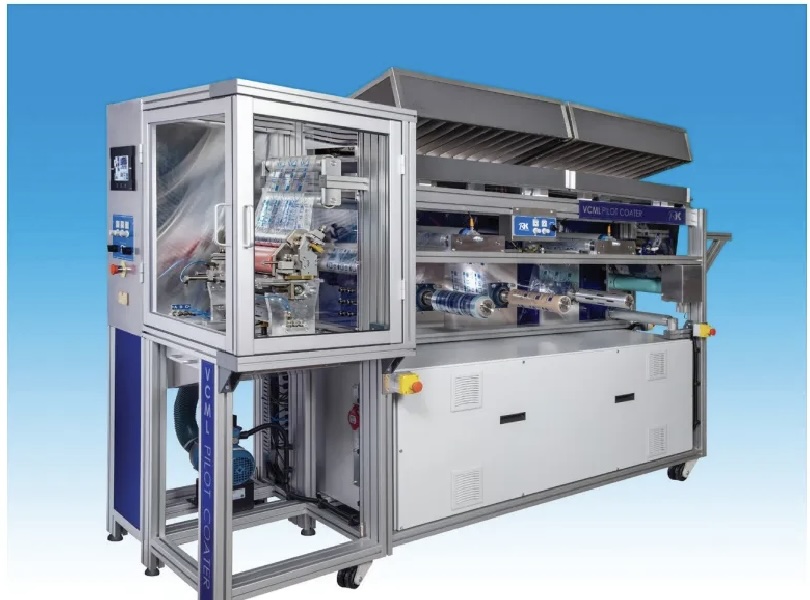Obtaining Barriers When Coating and Printing Flexible Materials
- Published: June 10, 2024

By Tom Kerchiss, Chairman, RK PrintCoat Instruments Ltd.
Thin flexible substrates of paper, film and foil are often modified, manipulated, coated or combined with other substrates, adhesives or chemical blends to facilitate processing or confer a material or materials with specific properties that may otherwise be absent.
Substrates may be valued for the thermal stability, permeability and physical strength and barrier resistance that they provide. Substrates and consumables must meet regulatory requirements with regard to safety and wellbeing and contain non-migratory components. Printability, convertibility and the ability to accept embellishment or value-added processes is of course a must.
The base material, method of manufacture and additional surface modifications, often made at the time of production, may make the choice of one substrate over another (theoretically) easier to decide upon.
Film manufacturers and formulators produce modified structures from polymers such as polyethylene, polyester and poly-propylene. Polyethylene for example, when modified and in the form of polyethylene terephthalate (PET) provides good gas, aroma and moisture resistance making it suitable for carbonated soft drink bottles, snack food wrappers and much more besides.
Flexible packaging is an important packaging medium. With so much purchasing dependent upon the whim of the moment, even the most basic of wraps or packs need to be designed to gain attention during that brief moment of eye contact. Consider confectionary, particularly chocolate, an important sector for flexible packaging.
Oriented polypropylene is highly valued for some applications. It can, for example, provide a white pearlescent sheen to a simple wrap. For confectionery wraps, foil and metalized papers can be used not just for barrier protective purposes but also for the silver/gold and other metallic decorative sheen that they provide.
Package print converters sometimes print reels of pre-metallized materials such as polypropylene (PP) as a single ply on flexographic or gravure presses. But there are alternatives. For instance, it is possible to laminate metallized oriented-polypropylene (OPP) to another film prior to printing. Sometimes metallized polyester is reverse printed prior to laminating. Of course, much depends upon circumstances and chosen materials and dictates of the application.
Chocolate and other confectionery items as well as snack foods such as nuts and crisps must be packed in materials that can protect them from oxidation, moisture, light, heat and spoilage that may arise as a result of microbial contamination - bacteria, molds and fungi, etc. In some situations, flexible pouches may be appropriate (a subject along with laminates and inks that this author will cover later in the year).
Chocolate, unlike cocoa, does not possess anti-oxidant properties so it reacts badly when exposed to atmospheric oxygen quickly becoming stale. Items that include chocolate such as chocolate croissants lose flavor, look unappealing and become fit only for throwaway.
Improvements in polymer filmic technology coupled with inorganic and organic surface treatments and coatings make it far easier to source material that meets various objectives such as specific heat-seal thresholds, gloss, clarity, flexibility without cracking and product resistance.
Material selection can be a trade off. For example, some polymeric films have an intrinsic barrier resistance either to moisture or oxygen, but rarely both. For the packaging of certain foods the composition of the fat content, pH and aroma compounds can have an impact on the sorption characteristics of some of the polymers.

Environmental factors such as temperature and relative humidity can compromise permeability and barrier resistance.
Regardless of material or process selection, the converter and others in the supply chain need to weigh up different processing options. It may be that on method of coating is economically more advantageous than another but does not provide the necessary barrier properties that an application requires. A degree of experimentation and trialing may be necessary.
Barrier critical properties that may be required for those engaged in flexible packaging, particularly onto films and papers include, humidity control, safe sealing, air-tightness, light protection (UV), oxygen permeability, aroma barrier heat resistance and water vapor protection. Peel-ability and grease proofing might be a requirement.
There are many coating applicator methods that may be considered. One option is reverse gravure coating. Reverse gravure with its large wet coat range offers key coating benefits such as uniformity and freedom from pinholes. It is worth noting that pinholes will impact the effectiveness of any barrier that has been put in place.
A lot of work is being carried out to make barrier coatings more environmentally acceptable and quite a few coating practitioners are moving to water-based coatings with lower solids. Sometimes modification is needed to process equipment such as dryers.
The search for packaging materials with barrier properties is driven by the diverse requirements of the end user. Some barrier properties are easier to obtain than others. Obtaining a good moisture barrier may be relatively easy, obtaining a barrier to gases may be more difficult.
Polyethylene and polypropylene offer little in the way of barrier resistance to oxygen, whereas ethylene vinyl alcohol or EVOH — one of the familiar options for clear high barrier filmic applications - provides barrier protection against oxygen and is an equally effective odor and aroma barrier.
The barrier effectiveness of EVOH however, varies according to thickness and to factors such as temperature and humidity level at the molecular interface, not the ambient humidity of the general environment.
Flexographic and gravure packaging printers and converters have to deal with many ink/substrate-related issues. Filmic substrates such as polyethylene incorporate slip agents. While slip agents do an admirable job of modifying the co-efficient of friction, if they migrate to the surface of the substrate this can result in ink adhesion difficulties and print defects. Some ink may also contain slip additives which, when combined with the filmic slip additives, softens the ink and increases the tendency for blocking to occur.
Corona treatment of the film on press may burn off the excess additive, provide for better wettability and allow the ink a better chance of adhering to the substrate. There are other options though. For instance, printers working in conjunction with the ink supplier may instead opt for an alternative ink system to resolve the problem. One solution, though one that is not always up for consideration, is to switch to a different substrate, perhaps even laminates.
About the Author
Tom Kerchiss is the chairman of sample preparation system and print/coat/laminating technology specialist RK PrintCoat Instruments Ltd. The company, which won an Innovator in Pre-Press Award for the FlexiProof 100, supplies printing ink manufacturers, both large and small, as well as printers, converters and other businesses with color communication devices for all of the major print disciplines.













